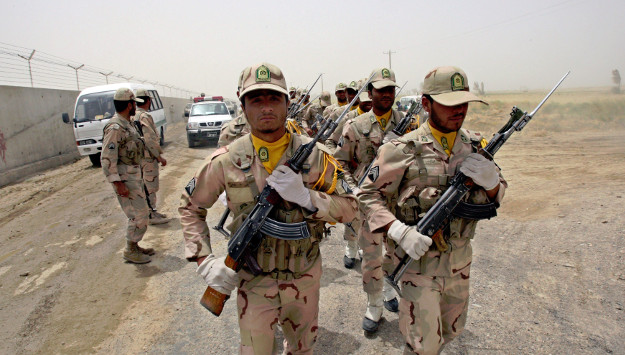The Iranian intelligence minister has announced that the country’s security forces have identified and disbanded about 30 terrorist cells over the past Iranian calendar year, which ended on March 20, 2017. “The Intelligence Ministry seized many items of equipment and ammunition from these (terrorist) teams,” Mahmoud Alawi said while addressing a large congregation of worshipers in Tehran on Friday. He added that 108 magnetic bombs and 15 suicide jackets were among the times confiscated by the security and intelligence personnel. According to the intelligence minister, these groups intended to carry out terrorist attacks in crowded places inside Iran.
But he praised the country’s intelligence and security forces for their efforts to keep Iran as the “island of stability” in a region rocked by terrorism and chaos.
Comment: The Islamic Republic leaders often tries to justify its military involvement in neighboring countries by telling the Iranian people that it has to fight Iran’s enemies abroad to maintain security and stability inside the country. But the latest spike in attacks against the Iranian security and law enforcement forces may undermine the regime narrative.
Security situation in Iran’s southwestern and northwestern regions is particularly tense and volatile. Last week, a Pakistan-based militant group called Jaish al-Adl killed 10 Iranian border guards in the restive Iranian province of Sistan and Baluchestan – prompting Tehran to send a high-level, 12-member delegation led by Foreign Minister Javad Zarif to Islamabad to discuss cross-border security issues.
Iran’s Sistan and Baluchestan, one of the country’s most impoverished province, has been a hotbed for low-intensity Sunni insurgency for a long time. It shares borders with Pakistan and Afghanistan and is a key drug trafficking route in the region. The Iranian government considers the restive region a top security priority. Hundreds of Iranian security forces have been killed in the fight against insurgents and drug smugglers in the province over the past decade. And the emergence of the so-called Islamic State in neighboring Afghanistan and Pakistan and its potential spillover into Iran’s Sunni-majority southeast has forced the Iranian government to pay more attention to the once-neglected region. Both the Islamic Revolution Guards Corps (I.R.G.C.)'s ground forces and Basij units have conducted large-scale military exercises in the southeastern region in the past one year. Last month, two separate attacks killed three I.R.G.C. officers in the area.
In the northeast, the Democratic Party of Iranian Kurdistan (P.D.K.I.) has resumed armed resistance against the Iranian regime. Mustafa Hijri, P.D.K.I.’s secretary general, said in January that their resistance was not “just for the Kurds in Iran’s Kurdistan, but it is a struggle against the Islamic Republic for all of Iran.” PDKI militants based in the Iraqi Kurdistan have repeatedly crossed the border and clashed with the I.R.G.C. in the Iranian province of Kurdistan.
Tehran claims that Iranian Kurdish groups receive support from regional governments, including Saudi Arabia, to fight Iran. But Hijri rejected the allegations saying that it is the Iranian regime’s policy to paint not just the Kurds but all resistance groups and political activists as foreign pawns.



